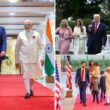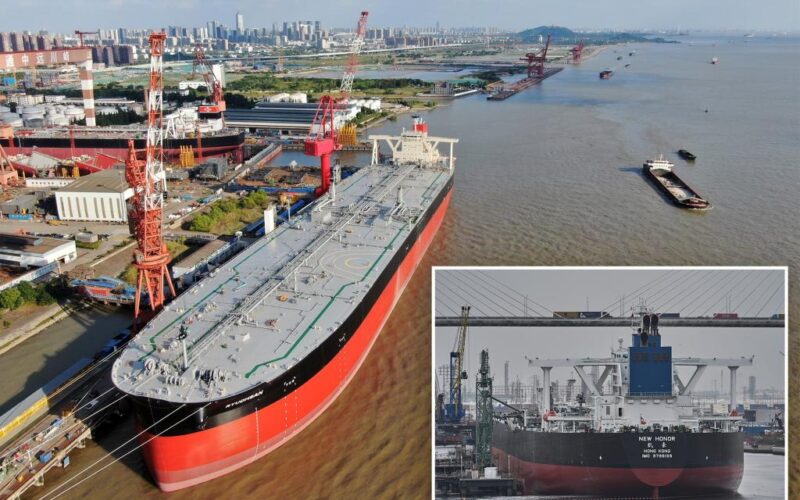Chinese-built supertankers transporting oil into the United States could be forced to pay fees of up to $5.2 million per each port call, according to new guidelines announced by the Trump administration.
The newly announced fees, which were announced as part of the administration’s plan to revive the domestic shipbuilding industry while weaning the economy off of its dependence on China, threaten to escalate the trade dispute between the world’s two largest economies.
According to a recent analysis by Arrow Shipbroking Group, supertankers constructed in China but operated or owned by non-Chinese entities will incur a surcharge approaching $1.9 million for every call at a US port.
This fee rises dramatically to around $5.2 million for vessels directly owned or operated by Chinese firms, the company outlined in a note dated April 18.
Previous iterations of the US proposal called for maximum fees of around $3.5 million per visit to an American port.
The substantial increase in potential fees arises primarily from a revised calculation method introduced by Washington, now based on a vessel’s cargo capacity, or net registered tonnage (NRT).
Beginning mid-October, fees for non-Chinese operated but Chinese-built ships will be set at $18 per NRT — increasing to $50 per NRT if the vessel is Chinese-owned or operated.
This shift from per-visit to capacity-based levies significantly amplifies the cost for larger ships.
Arrow’s research indicates that very large crude carriers (VLCCs) and similar supertankers will bear particularly steep costs under this new methodology, compared to smaller vessels such as aframax tankers.
The study noted that different-sized product tankers would face fees ranging from $575,000 to approximately $1.2 million per US visit if they are linked to Chinese ownership or operations.
Despite the charges, some market analysts suggest the new rules could be less punitive overall when considering various exemptions and carve-outs introduced by the Trump administration.
However, the broader financial impact remains substantial, especially for Chinese shipping entities.
“All in all, the new levies are seen as less severe than before, after taking into account carve-outs and exemptions,” Arrow explained.
Nonetheless, the brokerage emphasized that the policy “still has the potential to impose heavy tolls on shippers, and Chinese owners in particular.”
The shipping industry’s composition could potentially mitigate some impacts of the increased fees, given that a large majority of tankers currently in global trade were built in South Korea.
Clarkson’s Research data confirms this, showing the existing Chinese-built tanker fleet is roughly half the size of its South Korean counterpart.
Still, analysts warn that the economic consequences could significantly influence Chinese shipbuilding and maritime logistics sectors, pressuring businesses to reconsider their operational strategies amid heightened geopolitical tensions.
This latest policy adjustment underscores Washington’s continued strategy to challenge Beijing’s maritime and manufacturing prowess through targeted economic measures.
The new fee structure aligns closely with broader US trade policies aimed at reducing reliance on Chinese-built assets and bolstering domestic and allied shipbuilding capabilities.
Industry observers anticipate potential retaliatory measures from Beijing, as this latest move adds further tension to the already strained relationship between the two economic superpowers.
Shipowners, operators and global maritime trade partners will closely monitor developments as the mid-October implementation date approaches.








